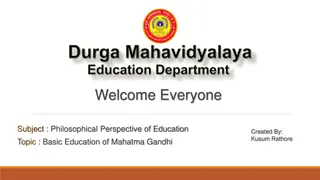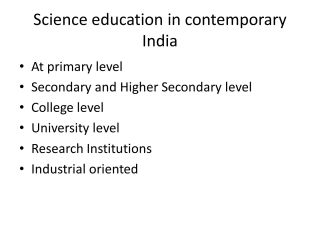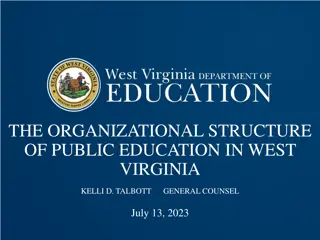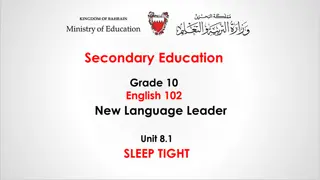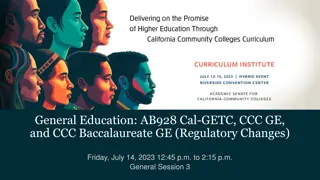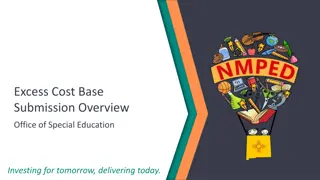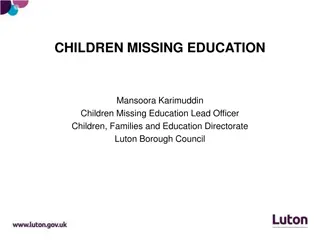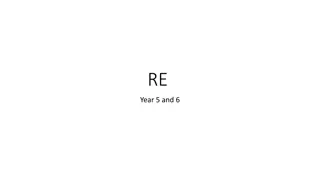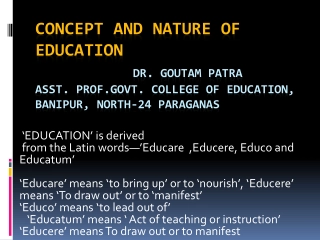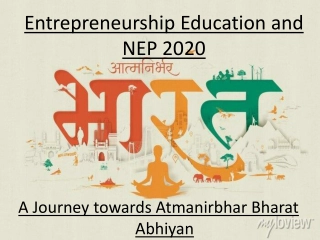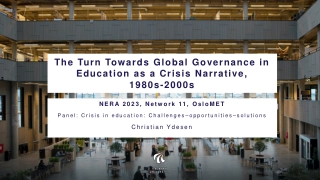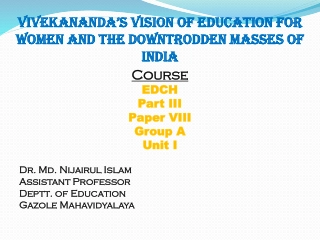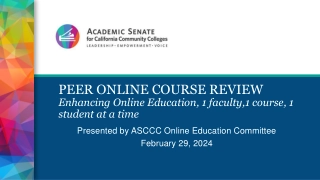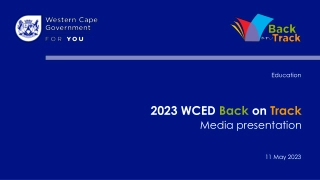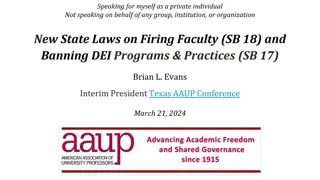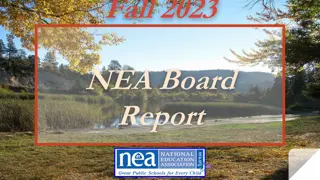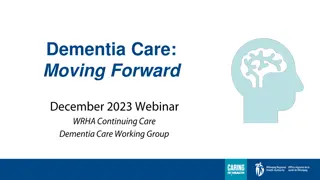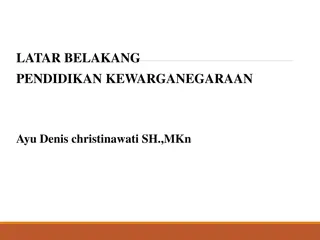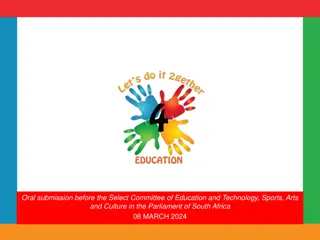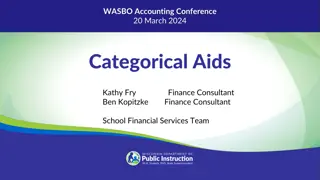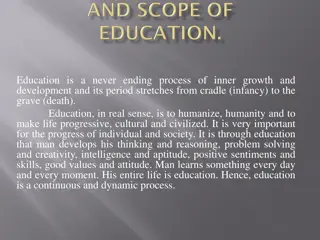Understanding Different Generations in Education
Explore the characteristics and preferences of various generations in education, from the Baby Boomer Generation to Generation Z. Gain insights into their communication styles, educational approaches, and technological adaptability. Understand the unique dynamics of each generation to enhance teaching strategies and student engagement.
Download Presentation
Please find below an Image/Link to download the presentation.
The content on the website is provided AS IS for your information and personal use only. It may not be sold, licensed, or shared on other websites without obtaining consent from the author. Download presentation by click this link. If you encounter any issues during the download, it is possible that the publisher has removed the file from their server.
Presentation Transcript
Ashley Smith, M.Ed., CST, FAST Tammy Schaefer, BSOL, CST, CSFA Effective Didactic and Practicum Teaching Strategies
Generation Groups The Greatest Generation: born 1901-1924 (Great Depression) The Silent Generation: born 1925-1945 (McCarthy era, WWII consequences) The Baby Boomer Generation: born 1946-1964 Generation X: born 1965-1979 (inception of the internet) Generation Y/Millennials: born 1980-1994 Generation Z: born 1995-2012 Generation Alpha: born 2013-2025 (21st century)
Baby Boomer Generation One of the most relevant groups due to being present for many of the technology advances in the past 50 years. More adaptable to modern growth and learning how to function in today s technological age. More personally-focused. Prefers to be in a face-to-face classroom Appreciates reflection and feedback, rules, boundaries Education is a birthright Communication is with touch-tone phones and a call me anytime disposition.
Gen. X The most fiercely independent Prioritizes self-directed educational opportunities to learn on their own schedule. Rolls eyes at ground rules. Serve as a bridge from older populations to younger ones. Present for the inception of the internet, video games, AI, and is the population that has created many of these advances. Education is a way to get there . Communicates with cell phones and wants to be called only at work.
Millennials/Gen Y Prefers to access information on-demand. Disregards ground rules. Grew up with the internet. Entertained all the time. Education is an incredible expense. Communicates with the internet, cell phones, e-mail Earns to spend Product of merged families Very social Online learning needs to be quick and interactive.
Gen. Z (Digital Gen.) Social media First population to cope with cyber-bullying School related violence and climate crisis Communicates on cell phones via text or DMs on social media More technology access than any other generation at a young age Education is expensive and may not be necessary (YouTube, etc.) Instructors struggle to connect and engage
Student Prospective: (Gen. Y & Z) Current Cohort Dynamics 14 students - 6 have full time jobs - 2 have children Value assignment due date reminders Don t know how to have a relationship with instructors Bonding ideas Too much information at once is overwhelming Don t want to be ignored Start the day with positive intentions
How to be a good allied healthcare instructor Define good . What are your goals, program objectives, university objectives, etc.? Are you meeting ARC/STSA thresholds? Exceptional communication and HR skills. Evaluates students intellectual development and is respectful. Recognizes the different learning styles housed in each cohort and adapts. Three types: empathetic, competence-centered, and innovative
Empathetic Instructor (Gen Y instructors)- Affective Domain I am understanding I am patient I am strict I am always available for the students Care and compassionate yields better communication
Competence-Centered Instructor: Cognitive Domain I am well-qualified for my job I treat my students like adults I am very hands-on in teaching students I set expectations for student learning and behavior Better pedagogy content knowledge + enthusiasm = higher achievement gains and competent healthcare professionals
Innovative Instructor: Psychomotor Domain I am enthusiastic I am into interprofessional and learning collaboration My classes are interactive I can apply learning to real-life experiences I use technology effectively and efficiently I have effective teaching strategies Allows exploration of identity and learning differences to promote innovative and collaborative professionals
The need for flexibility (Gen X instructors) Gen X and higher desire a balance between work and life. Flexible lecture hours are possible if online/Clinical hours cannot be flexible. This is a give and take.
Knowles Andragogical Model The need to know: Why am I learning this? The learners self-concept: I am self-directed. The role of the learners experiences: I have life experience. Readiness to learn: I am ready to learn cognitively. Orientation to learning: How will I utilize this material in real-life? Motivation: What are the external/internal motivators?
Gardners Theory of Multiple Intelligences (8) Linguistic: Sensitive to spoken/written language (lawyer, author) Logical-Mathematical: Analytical/number smart (accountant) Spatial: Recognize/manipulate wide space (pilot, surgeon, architect) Bodily-Kinesthetic: Use whole body (surgeon, surg tech, pt, mechanic) Musical: Recognize/create music (singer, DJ, composer, musician) Interpersonal: Understand intentions/desires (teacher, manager) Intrapersonal: Understand oneself (therapist, clergy, counselor) Naturalist: Recognize species/environment (botanist, astronomer)
How to use theory? Theory can be used as foundational information and research to create effective teaching methods that will satisfy and engage all generations and learning styles/intelligences.
Didactic: Learner-centered approach: Study-learning with higher educational efficiency Consider previously acquired knowledge Align educational process with goals/needs of learner Support learner s initiative and responsibility Encourage learning by doing (kinesthetic) Create feedback opportunities
Didactic Continued Case studies Legos/play dough Stations Presentations Technology (videos, supplemental resources with textbook, software) Games Reflection periods
Student Perspective: (Gen. Y & Z) Lab lectures too much to take in all at once .2 hours without TikTok. U N S U R V IV A B L E U N S U R V IV A B L E Instructors = Students= Learn better with hands-on techniques
Playdough thyroid
How Class Starts: Brain warm-ups: thinks outside the box 1 at 3:46 pm 13579 AZ ECNALG NAFISH NAFISH ONE ONE DOCTOR DOCTOR NIRENDEZVOUSGHT
Know, Want, How, Learn (KWHL) Diagram (Brainstorming) and Other Active Learning Strategies for Remembering and Retrieval What do I KNOW? What do I WANT to know? HOW will I find out? What did I LEARN? Structures of Upper GI: Dysfunctions of Upper GI: Structures of Lower GI: Dysfunctions of Lower GI: Process of Digestion: Diversions/Treatments for Alterations in Digestion? Open-ended probe on special populations unit: 1. What do you think of when you think of the elderly? 2. How do you picture yourself when you are elderly? 3. What would be your three most essential physical concerns? 4. What would be your three most essential psychosocial concerns? Draw a diagram depicting the flow of cardiac blood through the arteries in red and the veins in blue.
Active Learning Strategies for Comprehension and Understanding RSQC Strategy: Recall: List words or phrases of most meaningful points from the last class. Underline the most important concept you gained from participation. Summarize: Write one sentence to summarize the essence of the previous class in personal terms. Question: Jot down one or two questions that you still may have about the content from the previous class. Connect: Identify the connection between the concepts learned in the previous class and the goals of and skills to be learned in this course.
Big Picture Overview of Health Concepts
Active Learning Strategies for Application and Deeper Comprehension Concept Map: To demonstrate relationship between ideas to help analyze information, chain of events, or systems.
Continued Simple cycle web: To demonstrate understanding of cycles and processes at a simple level before introducing more complex information.
Continued Tree diagram: To demonstrate the breaking down of complex ideas into component parts and to allow students to explore relationships between a whole and its parts.
Active Learning Strategies for Analysis: Venn Diagram: To demonstrate ability to compare and contrast.
Continued General/Specific Analysis for Any Unit of Study: Students analyze each other s responses to general/specific overview of objectives according to criteria.
Defining Features Grid for Unit on Respiratory Disorders
Student Perspective: (Gen. Y & Z) LAB Need things introduced in small quantities Instrument video Flashcards are most helpful Questions Box Games
Passing Instruments This can also be done in a circle, like musical chairs
Other Helpful Lab Ideas: Bonding Hula Hoop Challenge
Motivation and Accountability Post at least weekly on a communication app (GroupMe, Crew, etc.)
1 CareGivers of America. (2022). 2022 generation names explained. CareGivers of America: Home healthcare services. https://caregiversofamerica.com/2022-generation-names- explained/ References Khudayberganovna, N. Z., & G'aniybay o'g'li, D. U. (2023). Creative approach to the process of higher education and technologies using pedagogical methods. European International Journal of Multidisciplinary Research and Management Studies, 3(1), 99 105. https://doi.org/10.55640/eijmrms-03-01-16 Knowles, M. S., Holton III, E. F., & Swanson, R. A. (2015). The adult learner: The definitive classic in adult education and human resource development (8th ed.). Routledge. Marenus, M. (n.d.). Gardner's theory of multiple intelligences. SimplyPsychology. https://www.simplypsychology.org/multiple- intelligences.html#:~:text=To%20broaden%20this%20notion%20of,Interpersonal%2C% 20Intrapersonal%2C%20and%20Naturalist. Materna, L. (2007). Jump-start the adult learner: How to engage and motivate adults using brain-compatible strategies (1st ed.). Corwin. Reyes, A., Galvan, R., Navarro, A., Velasquez, M., Soriano, D., Cabuso, A., David, J., Lacson, M., Manansala, N., & Tiongco, R. (2020). Across generations: Defining pedagogical characteristics of generation x, y, and z allied health teachers using q-methodology. Medical Science Educator, 30(4), 1541 1549. https://doi.org/10.1007/s40670-020- 01043-7
Questions? Jackie s Box Rules Gen Z Hula Hoop Challenge Table Topic Cards Post Conf Table Topic Cards Marshmallow Challenge











